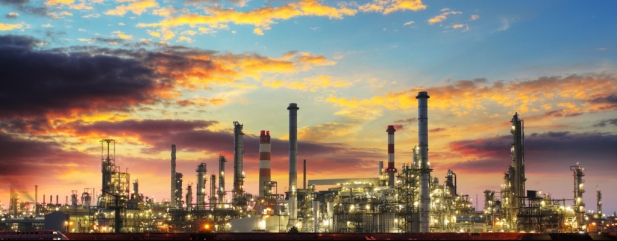Archived article
Please note that tax, investment, pension and ISA rules can change and the information and any views contained in this article may now be inaccurate.
Oil price could surge one more time on exploration clampdown

A bombshell report from the US-based International Energy Agency has effectively set the clock on the end of fossil fuels but the implications of its forecasts could include a last hurrah for the oil price.
In the starkest terms the IEA has said exploitation of new oil, gas and coal projects must stop in 2021 if the world is to address the climate change challenge and meet a goal of net zero emissions by 2050.
This means the only money spent on oil and gas would be on fields already in development or production.
The reality is that this is very unlikely to happen, however the report nonetheless offers an indication of the direction of travel.
Longer-term the implications of a shift into other energy sources are highly negative for oil prices. The IEA predicts oil prices will be around half their current level by 2030 at $35 per barrel and drift lower to $25 per barrel by 2050.
The IEA projects oil and gas spending to remain at depressed 2020 levels of around $350 billion in the next five years and fall thereafter.
In the short-term a significant reduction in investment in new sources of oil and gas raises the prospect of a supply crunch, particularly if the rollout of electric vehicles and a transition to renewable energy sources takes longer than expected – which is not an unreasonable assumption.

This could drive oil prices sharply higher, adding to inflationary pressures and effectively acting as a tax on global growth as higher crude oil prices feed into more expensive transportation and energy costs for businesses and consumers.
This creates a conundrum for the large oil and gas companies like BP (BP.) and Royal Dutch Shell (RDSB). Will they really retreat entirely from new oil and gas developments in a high oil price environment?
The optimistic view for these businesses is that the extra cash flow they could generate in such a scenario would help fund the investment in a transition away from fossil fuels while enabling them to maintain their dividends.

Francisco Blanch, a commodity and derivatives strategist at Bank of America, notes a shift away from public transport in the wake of the pandemic could act as a further catalyst for prices to rise.
‘A post-Covid scenario marked by a permanent reduction in mass transit use could quickly translate into a major worldwide oil demand rationing exercise. Even if electric vehicle sales reach 34% by 2030, an acceleration in miles driven of 20% could push peak oil demand levels to 109 million barrels per day by 2027.
‘On the supply side, oil field decline rates have accelerated sharply in 2020 and in early 2021. Plus, energy capex has come down sharply in the past year and now the IEA is calling for further investment reductions to meet climate goals. Reflecting a tighter market ahead, Brent (for delivery) in 2026 recently traded above $59 per barrel… up from a 2020 low of $47 per barrel.’
In Blanch’s view long-dated oil prices, or in other words the price paid for oil for delivery years into the future, could increase by $10 to $15 per barrel.
While a new nuclear deal with Iran could be a bump in the recovery of oil prices, producers’ cartel OPEC would ‘likely act to accommodate the comeback one of its largest members,’ adds Blanch.
Copper and iron ore to be hit by Chinese crackdown
Commodities could fall markedly as China vows to put a lid on rising prices, but mining shares have seen limited impact for now.
Metal prices could see significant falls as recent actions by the Chinese and US governments look set to put a lid on demand amid skyrocketing prices.
One bellwether metal, iron ore, saw its price drop around 7% to $163 per tonne after China’s National Development and Reform Commission urged commodity companies in the country to maintain ‘normal market orders’ amid warnings over ‘excessive speculation’, vowing ‘severe punishment’ against ‘speculators and hoarders’.
China is the world’s biggest consumer of iron ore, and other metals like copper.
The price of the latter didn’t react as severely as iron ore to the comments from the Chinese authorities, but copper could also be impacted if, as some fear, price caps are brought in to control what China calls ‘unreasonable’ price increases in such commodities.
Analysts say these are the toughest comments yet from China regarding commodity prices.
Another potential impact on these industrial metals could come from suggestions the Biden administration could be prepared to compromise on its infrastructure spending plans.
A reduction in expenditure from $2.25 trillion to $1.7 trillion has been mooted, with spending on roads, bridges and broadband – three areas which need copper and iron ore – set to be scaled back.
Despite what could well be significant near-term headwinds, shares in most of the major London-listed miners barely moved on the news, with a pullback in commodities perhaps expected by the market after such a stunning run this year.
Important information:
These articles are provided by Shares magazine which is published by AJ Bell Media, a part of AJ Bell. Shares is not written by AJ Bell.
Shares is provided for your general information and use and is not a personal recommendation to invest. It is not intended to be relied upon by you in making or not making any investment decisions. The investments referred to in these articles will not be suitable for all investors. If in doubt please seek appropriate independent financial advice.
Investors acting on the information in these articles do so at their own risk and AJ Bell Media and its staff do not accept liability for losses suffered by investors as a result of their investment decisions.
Issue contents
Editor's View
Feature
Great Ideas
- It could be takeover time again for Premier Foods
- Why it is not too late to profit from the SDI growth story
- Gamma Communications to hit top of range forecasts in 2021
- Walmart delivers with upgrade to forecasts as it gains market share
- Ford accelerates electrification drive with new battery plant and latest F-150 truck
- Supreme is a super-charged growth and income play

 magazine
magazine








